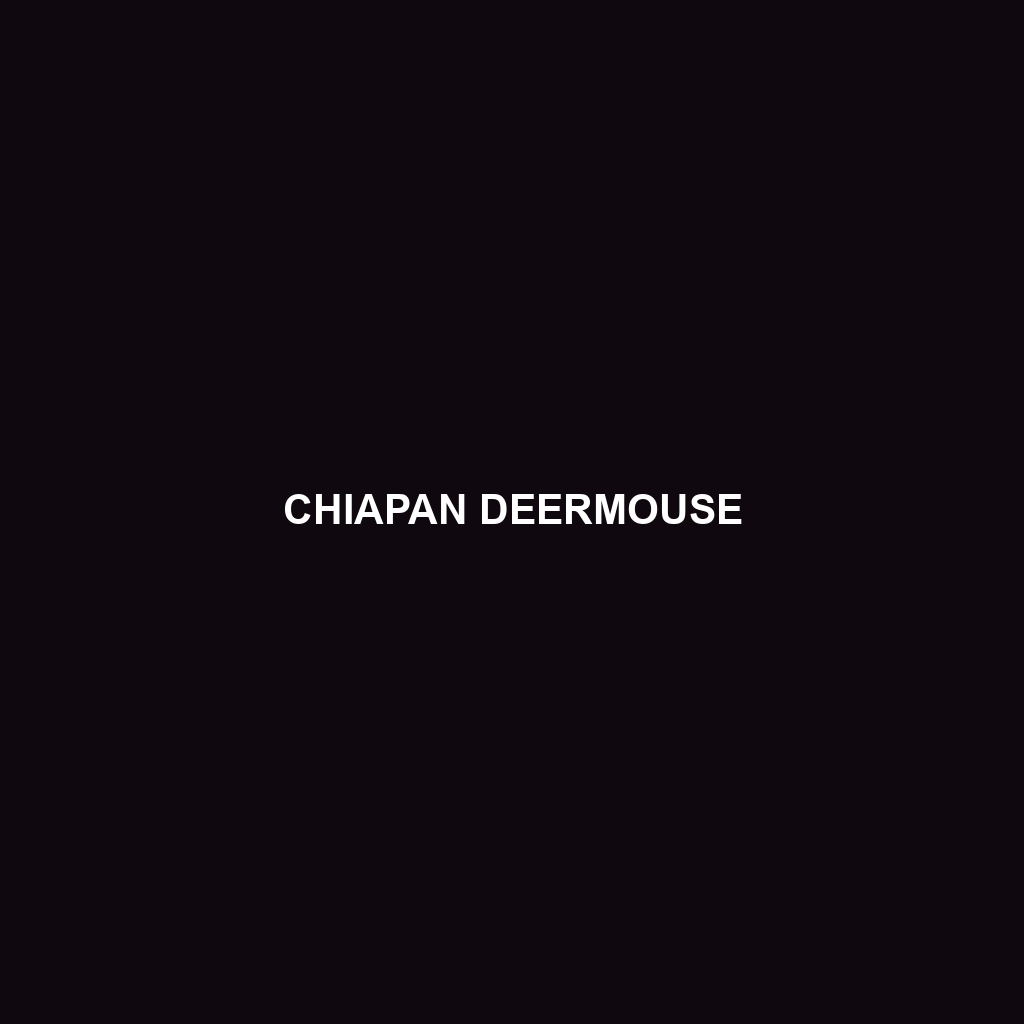Chiapan Deermouse (Peromyscus chiapanensis)
Common Name: Chiapan Deermouse
Scientific Name: Peromyscus chiapanensis
Habitat
The Chiapan Deermouse is primarily found in the tropical and subtropical forests of southern Mexico, particularly in the Chiapas region. This species thrives in environments with dense vegetation and a moderate climate, often inhabiting mountainous areas at elevations ranging from 1,000 to 2,500 meters. Their preference for moist, wooded habitats makes them integral components of these ecosystems.
Physical Characteristics
Chiapan Deermice are small rodents, typically measuring between 10 to 12 centimeters in body length, with tails that can add an additional 8 to 10 centimeters. They possess a distinctive appearance characterized by soft, dense fur that exhibits a reddish-brown coloration on their dorsal side, with lighter underparts. Notable features include large ears and prominent eyes, which are adapted for their nocturnal lifestyle. Their agile bodies are well-suited for climbing and navigating through their forested habitats.
Behavior
Chiapan Deermice are primarily nocturnal, showing increased activity during the night when they forage for food. They are known for their social behavior, often seen in small groups or pairs. These mice communicate through a series of vocalizations and body language, which aids in maintaining their social structure and territory. Additionally, they are proficient climbers, utilizing trees and shrubs to escape from predators and access food sources.
Diet
The diet of the Chiapan Deermouse consists mainly of seeds, fruits, and insects. They are opportunistic feeders, foraging on the forest floor and in trees for various food items, including nuts and berries. Their feeding habits contribute to seed dispersal, playing a crucial role in their ecosystem by aiding in forest regeneration. Many searches related to Chiapan Deermice focus on their dietary preferences and foraging patterns.
Reproduction
Chiapan Deermice have a relatively short gestation period of about 23 to 28 days. They typically breed year-round, with peak breeding seasons occurring during the rainy months. A litter usually consists of 3 to 6 pups, which are born blind and hairless. As they mature, they develop independence within a few weeks, showcasing notable maternal care from the mother.
Conservation Status
The conservation status of the Chiapan Deermouse is currently classified as vulnerable due to habitat loss and fragmentation caused by agricultural expansion and deforestation. This status highlights the need for conservation efforts to protect their natural habitats and ensure the survival of this unique species.
Interesting Facts
– Chiapan Deermice are considered a keystone species for their ecological role, helping maintain the balance in the forest ecosystem.
– They have a remarkable ability to adapt to various environmental conditions, which enhances their survival odds.
Role in Ecosystem
As both prey and seed dispersers, Chiapan Deermice play a significant role in their ecosystem. Their feeding habits help promote plant diversity and forest health, while they also serve as a food source for various predators, including birds of prey and snakes. The decline of their population could have cascading effects on their ecological community, underscoring the importance of maintaining sustainable environments for their survival.
